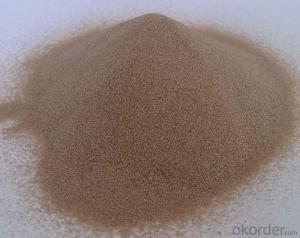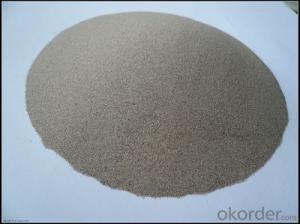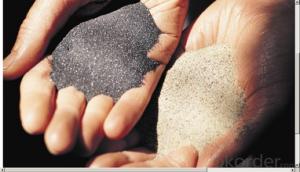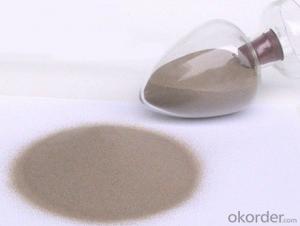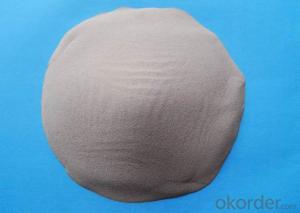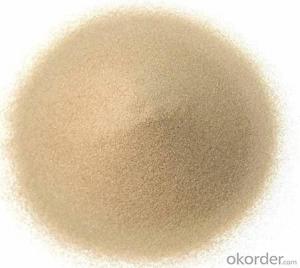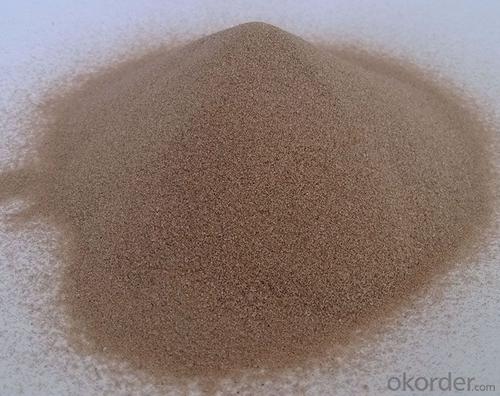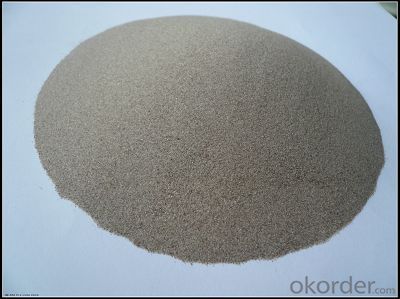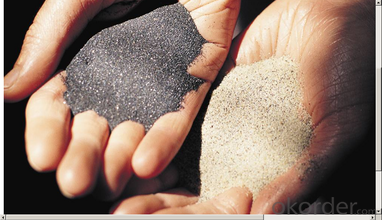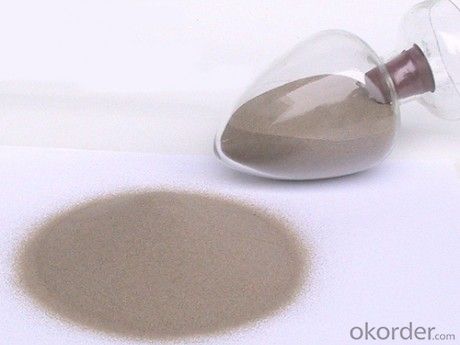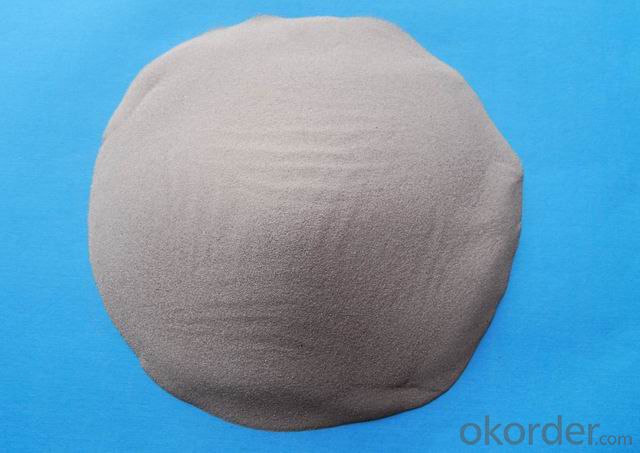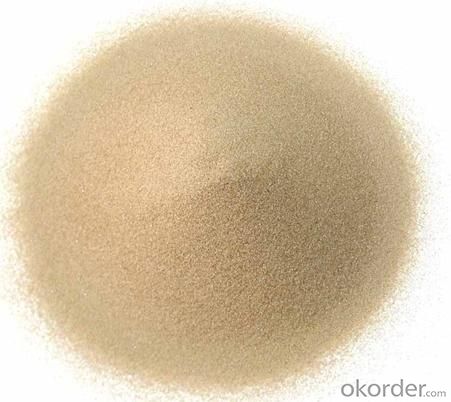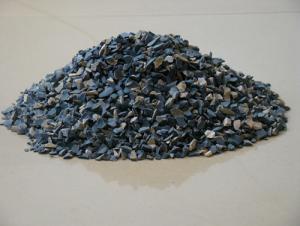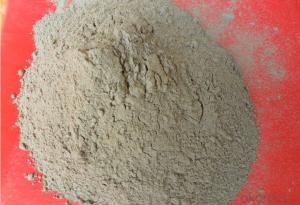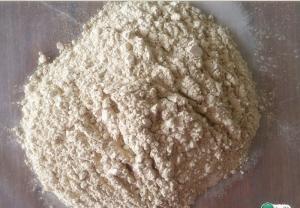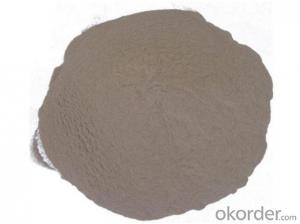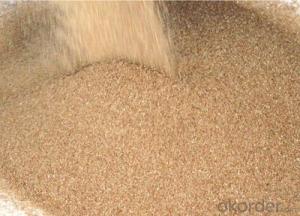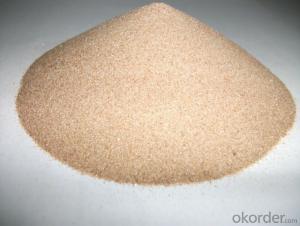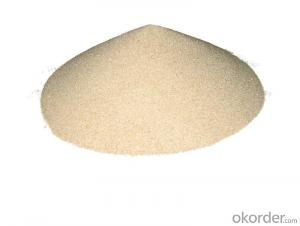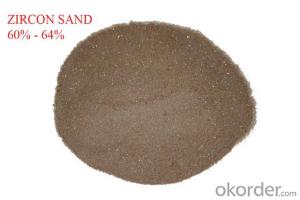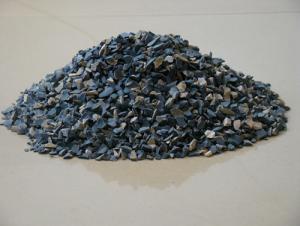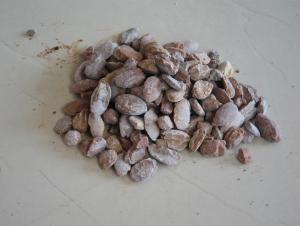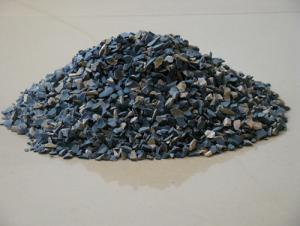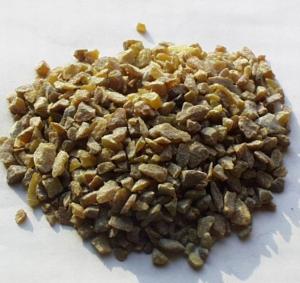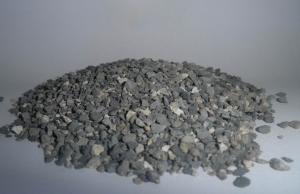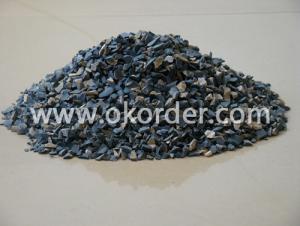High Purity Refractory Raw Materials:Zircon Sands and Zircon Flour
- Loading Port:
- Tianjin
- Payment Terms:
- TT OR LC
- Min Order Qty:
- 25 m.t.
- Supply Capability:
- 3000 m.t./month
OKorder Service Pledge
OKorder Financial Service
You Might Also Like
High Purity Refractory Material/ Zircon Sands and Zircon Flour
1.Structure of Zircon Sand and Zircon Powder
We are offer zircon sand With Below Mention Descriptions: ZrO2 65 - 67 %. We are offer zircon sand With Below Mention Descriptions: ZrO2 65 - 67 %. Zircon is a remarkable mineral, if only for its almost ubiquitous presence in the crust of Earth. It occurs in igneous rocks as primary crystallization products, in metamorphic rocks and in sedimentary rocks as detrital grains.
Further, the mineral due to hardness, durability and chemical inertness, zircon persists in sedimentary deposits and is a common constituent of most sands.
2.Main Features of Zircon Sand and Zircon Powder
Specific gravity: 4.7
Bulk density: 170-180 lb/ft3; 2700 kg/m3;
Hardness: 7.5 Moh
Angle of repose: 30 degree;
Melting point: 4000°F, 2200°c
Thermal stability: no change to 3090°F, 1700°c
Loss on ignition: 0.02%-0.12%
3.Main usage of Zircon Sand and Zircon Powder
The zircon sand is mainly used for fireproof materials (commonly called zirconium fireproof materials such as corundum bricks and zirconium fireproof fiber), sand for casting mould in casting industry (precision casting sand) and fine enamelware. In addition, the zircon sand is also used in the production of glass, metal (zirconium sponge) and zirconium compounds (zirconium dioxide, zirconium oxychloride, sodium zirconate, zirconium potassium fluoride, zirconium sulfate, etc.).
4. Zircon Sand and Zircon Powder Images
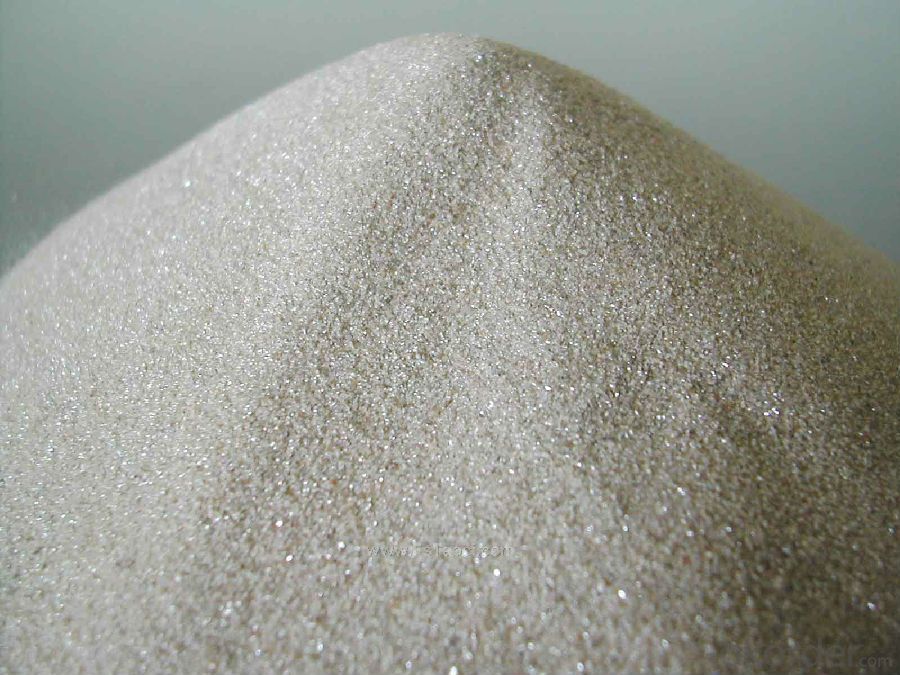
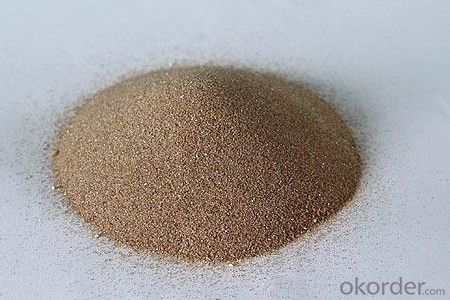
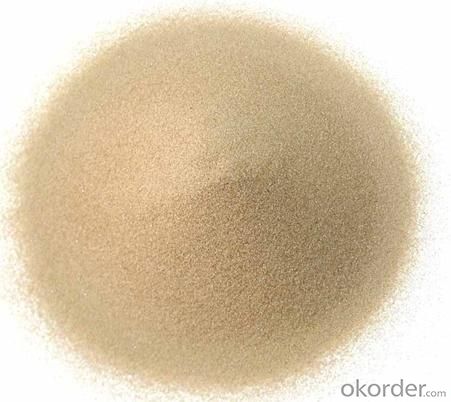
5. Zircon Sand and Zircon Powder Specification
Item | SY8 | SY6 |
Zr Content (ZrO2) | ≥66% | ≥65.5% |
Fe Content (Fe2O3) | ≤0.08% | ≤0.12% |
Ti Content (TiO2) | ≤0.10% | ≤0.10% |
6.FAQ of Zircon Sand and Zircon Powder
1). Q: Are you a factory or trading company?
A: We are a factory.
2). Q: Where is your factory located? How can I visit there?
A: Our factory is located in China. You are warmly welcomed to visit us!
3). Q: How can I get some samples?
A: Please contact me for samples
- Q: What are the fire endurance requirements of class A fire resistant door ?
- Hardwares are professional fire resistant lock, fireproof?door closer, fire hinge, handle, latch and sequencer, and they can also be configured according to user needs. Fire resistant time of class A and B fire resitant door is 12h and 09h respectively. It can also be customized according to customer needs into a variety of non-standard specifications. Steel fire door is developed in accordance with the national standard GB12955-2008, and in line with ISO3008, BS476 standards. Requirement: fire endurance should meet the A,B and C fireproof requirements respectively. You can also choose to install hold-open door device to leep the door leaf usually in open. Doorframe and door leaf is made up of imported or domestic quality electrolytic steel plate, electro galvanized steel plate or stainless?steel plate, filled with quality expanded perlite fireproof?panel which can withstand high temperature above 1200 ℃. The surface is processd with electrostatic spraying plastics, and auxiliaries are stainless steel fire resistant lock (or pipe shaft lock ) , galvanization for steel (or stainless?steel) fire hinge, domestic(or imported) door?closer.
- Q: What is the fire resistance thickness of the thin fire-retardant coatings?
- There is no detailed requirement on the thickness of the thin steelwork fireproof coatings and the thickness there refers to a certain thickness which must(at least) have fire resistance for a certain time. The thickness of fireproof coatings in engineering generally depends on the manufacturer's test reports. Our thin steelwork fireproof coatings: the fire resistance is 2.5 hours, the thickness is 4.9 mm, the fire resistance is 2.0 hours, the thickness is 3.5 mm, the fire resistance is 1.5 hours, the thickness is 1.75 mm, the fire resistance is 1.0 hours, the thickness is 1.17 mm.
- Q: Is refractory material harmful to human body?
- Part is harmful to human body, mainly refractory raw material, silica powder inhalation can cause lung tuberculosis, siliceous fiber on the human body does have great harm, in fact, like other inorganic fiber in the inhalation of the trachea or lung after the same harm to human
- Q: What's the requirements of fire-fighting criteria of heat insulating material?
- It shouldn't be under than B2 level. Roofing insulation fire rating requirements: the ministry of public security, housing and urban-rural development department issued about printing and distributing the civil building external thermal insulation system and the interim provisions on the exterior wall decorative fireproof prescribed in the notice: roof grassroots adopted duration of fire resistance is the non-combustible component that shouldn't less than 1.00 h's. Its roof insulation materials should not be below B2; Otherwise, the combustion performance of insulating material should not be below the B1 level. The junction of the roof and wall, the insulation layer around the opening part of roof should use the grade A thermal insulation material to set level fire-fighting belt that width is not less than 500 mm.
- Q: What are the specifications of fire resistant bag?
- Mesh number, namely hole number, refers to the hold number in each square inch. 5o mesh refers to 50 holes in each square inch and 500 mesh 500 holes. The larger the mesh number is, the more the holes are. The larger the mesh number is, the smaller the hole aperture is. Generally speaking, mesh number× aperture (microns) = 15000. For example, the aperture of a sieve of 400 mesh is about 38 microns; the aperture of a sieve of 500 mesh is about 30 microns.
- Q: What are the requirements of the performances of brasque refractory?
- The requirements of the performances of brasque refractory: 1, should have sufficient refractoriness and softening point under a fixed load. Because under the action of the electric arc, the inner and surface temperature of the different parts of the brasque can be up to 1500 ~ 1800 ℃. 2, should have strong slag resistance. Because the inward permeation of slag and smoke at high temperature through its pores of brasque cause melting loss of refractories, organization delamination and flaking. 3, should have good thermal shock resistance. Because in the steelmaking process, opening the furnace door, lifting the furnace lid will cause sudden temperature change of brasque refractory,flaking and cracking, resulting in premature failure of brasque. 4, should have sufficient strength, because the brasque will be impacted at the time of loading, vibrated when tilting, flushed by metal, slag and gas flow when boiling. 5, the thermal conductivity and the conductivity should be small. Refractories commonly used for electric furnace include magnesia bricks, dolomite brick, high-alumina refractory bricks, silicious refractory brick and magnesite ramming material. Due to the different working environment of each parts of the furnace, refractories are different.
- Q: Does the refractory material used in steelmaking all refer to refractory brick?
- The refractory material used in steel making doesn't all refer to refractory brick, but also includes refractory castable. The foaming?agent, ladle filler sand and deoxidizer are not refractory materials but ferrous metallurgy auxiliary materials.
- Q: How is the performance of refractory materials?
- It is a little difficult to answer. There are some requirement for refractory materials, such as fire resistance, softness, creep, thermal shock, abrasive resistance. Besides, requirements for construction performance include: Liquidity, plasticity and other linear change rate, volume density, strength (including high temperature) and all other important indicators must be tested the same conditions with the use of test conditions and test items like body density, strength, line changes in the basic project
- Q: Which refractory is better for building 1500 degree kiln ?
- The top and wall use alumina hollow ball brick. If it is cubic kiln, the kiln bottom should use heavy corundum brick. If it is continuous kiln, burning zone should use alumina hollow ball brick, burning zone seal and kiln car face brick. If it is pit furnace, curved seal should use heavy corundum brick, and furnace wall and top should use alumina hollow ball brick. That depends on what kind of kiln it is. Curved seal and kiln car should use heavy corundum brick. You can add me friends to have further talks.
- Q: What is refractory?
- Refractory is an inorganic nonmetallic material with minimum refractoriness of 1580 ℃. Now, refractory is not defined merely by judging that whether its refractoriness is at above 1580 ℃. Currently, refractory, an inorganic nonmetallic material, are widely used in metallurgy, ceramics, power and other industrial fields.
Send your message to us
High Purity Refractory Raw Materials:Zircon Sands and Zircon Flour
- Loading Port:
- Tianjin
- Payment Terms:
- TT OR LC
- Min Order Qty:
- 25 m.t.
- Supply Capability:
- 3000 m.t./month
OKorder Service Pledge
OKorder Financial Service
Similar products
Hot products
Hot Searches
Related keywords
